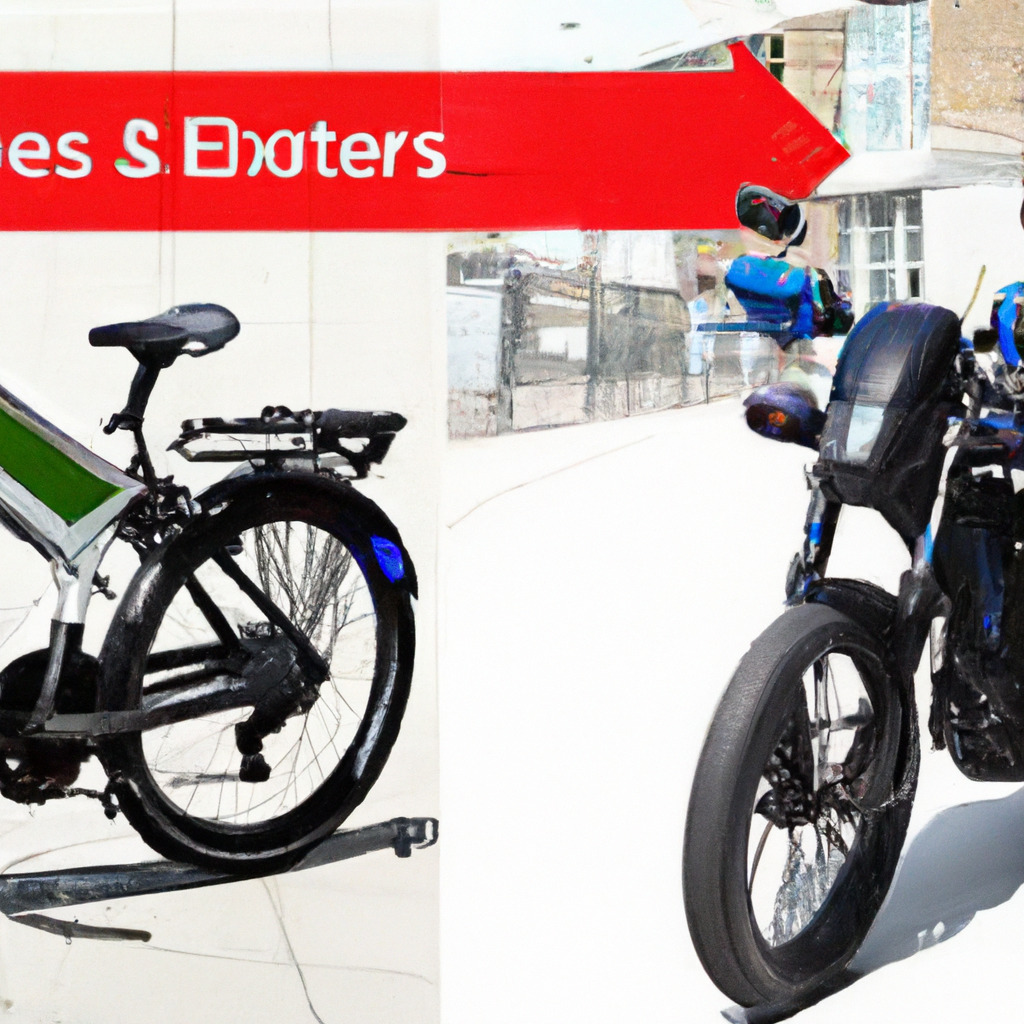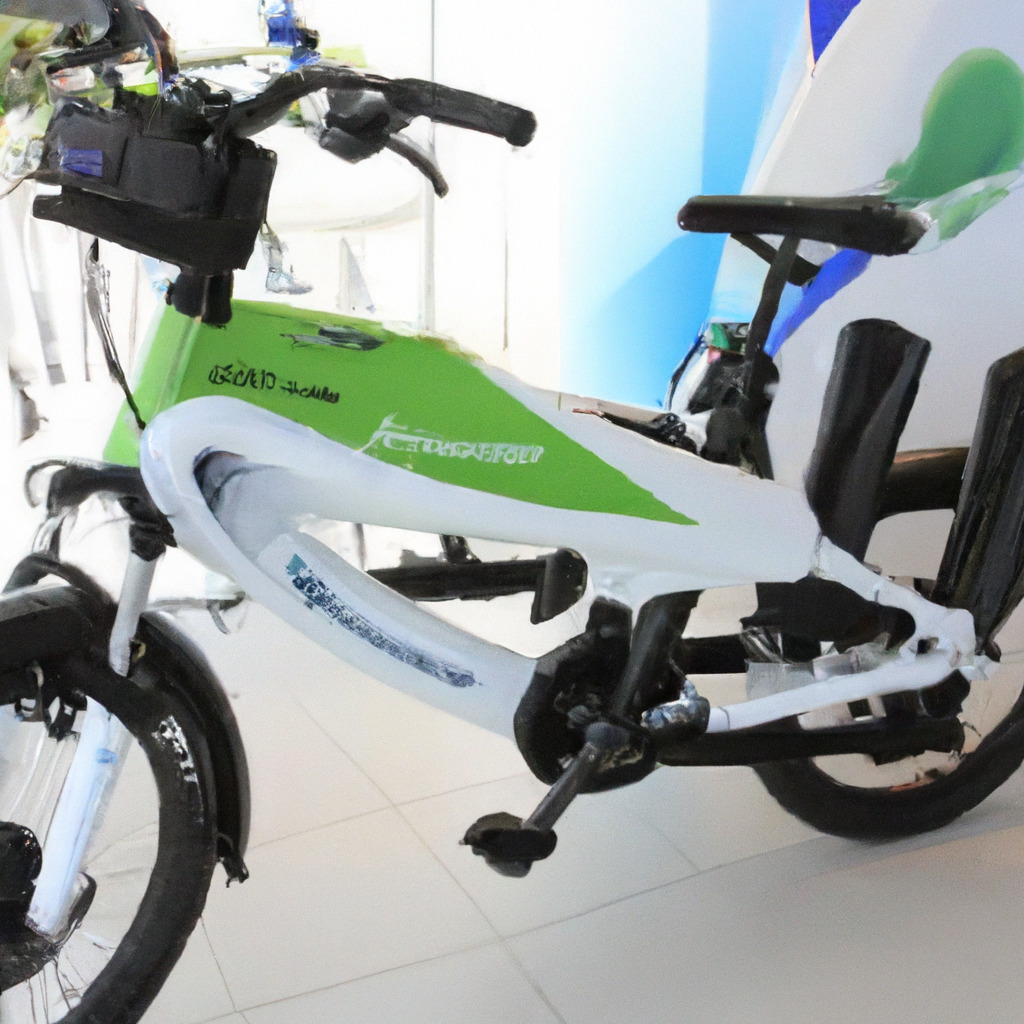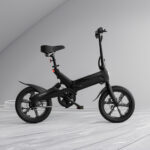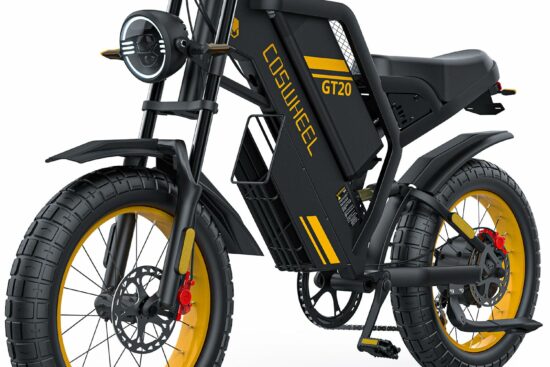
You’re about to discover an essential piece of information that will revolutionize the way you think about transportation: the answer to the question, “Can electric bikes be used on the road?” Electric bikes have taken the world by storm with their eco-friendly nature and effortless mobility, but many people still wonder about their legality and safety on public roads. In this article, we’ll unravel the truth behind electric bikes and their rightful place on the road, revealing all you need to know to embrace this innovative mode of transport with confidence. So sit back, relax, and let’s embark on a thrilling journey into the world of electric bikes on the road.
Laws and Regulations
Introduction
Electric bikes have become increasingly popular in recent years, offering an eco-friendly and efficient mode of transportation. However, before you hop on your electric bike and hit the road, it’s important to understand the laws and regulations that govern their use. This article will provide you with a comprehensive overview of the legal requirements and guidelines you need to follow to ensure a safe and legal riding experience.
Understanding Electric Bike Laws
In most countries, electric bikes are subject to specific laws and regulations that distinguish them from traditional bicycles and motorcycles. These laws typically define the maximum speed and power output of electric bikes, as well as any age restrictions or licensing requirements.
Maximum Speed and Power
One of the key distinctions between electric bikes and other vehicles is the maximum speed at which they can operate. In many jurisdictions, electric bikes are limited to a top speed of 20 mph (32 km/h) for motor-assisted operation. Additionally, there are regulations in place that restrict the power output of electric bikes to a certain level, such as 750 watts.
Age Restrictions and Licensing
In some countries, there may be age restrictions in place for riding electric bikes. For example, individuals under a certain age may be required to have a specific type of license or supervision while operating an electric bike. It’s crucial to familiarize yourself with the specific laws in your jurisdiction to ensure compliance and avoid any legal issues.
Safety Equipment Requirements
Just like traditional bicycles, electric bikes often require riders to wear certain safety equipment. This typically includes a helmet, reflective clothing, and lights for nighttime riding. These requirements may vary depending on your jurisdiction, so it’s essential to research and adhere to the specific safety regulations in your area.
Classification of Electric Bikes
Class I Electric Bikes
Electric bikes are usually classified into different categories based on their features and capabilities. Class I electric bikes are equipped with pedal assist only and are limited to a top speed of 20 mph (32 km/h). These bikes are designed to provide an electric boost while you pedal, making them an excellent option for commuting and recreational riding.
Class II Electric Bikes
Class II electric bikes, also known as throttle-assisted electric bikes, can reach a top speed of 20 mph (32 km/h) without any pedaling. These bikes are equipped with a throttle that allows you to control the speed and power of the motor without actively pedaling. Class II electric bikes offer a more laid-back riding experience, perfect for leisurely rides and exploring your surroundings.
Class III Electric Bikes
Class III electric bikes are similar to Class I bikes, with the added ability to reach a higher top speed of 28 mph (45 km/h). These bikes are often equipped with more powerful motors and are ideal for riders looking to cover longer distances or tackle more challenging terrain. It’s important to note that Class III electric bikes may be subject to additional regulations and restrictions, depending on your jurisdiction.

Types of Electric Bikes
Commuter Electric Bikes
Commuter electric bikes are specifically designed for urban and suburban transportation. These bikes typically have a lightweight and sleek design, making them easy to maneuver in traffic and navigate through tight spaces. Commuter electric bikes often feature fenders, lights, and racks for added convenience, making them an excellent choice for daily commuting.
Mountain Electric Bikes
Mountain electric bikes, also known as eMTBs, are designed for off-road adventures and trail riding. These bikes are equipped with robust motors and specialized suspension systems to handle rough terrains and steep climbs. Mountain electric bikes offer the perfect blend of power and endurance, allowing you to explore nature and conquer challenging trails with ease.
Folding Electric Bikes
Folding electric bikes are a versatile option for those who need a compact and easily transportable mode of transportation. These bikes can be folded and stored in tight spaces, such as the trunk of a car, a small apartment, or even carried onto public transportation. Folding electric bikes are a popular choice for urban dwellers and travelers who need a convenient and portable mode of transportation.
Speed and Power
Motor Power and Range
Electric bikes are powered by an electric motor, which provides assistance while you pedal or allows you to operate the bike without pedaling. The power output of the motor is measured in watts and can vary depending on the specific model of the electric bike. Higher wattage motors generally provide more power and torque, allowing for faster acceleration and better performance on hilly terrain.
Battery Range
The range of an electric bike refers to the distance it can travel on a single battery charge. The range is influenced by various factors, including the battery capacity, the power consumption of the motor, the terrain, and the rider’s weight. It’s important to consider the battery range when selecting an electric bike, especially if you plan on using it for longer commutes or extended trips.

Safety Measures
Helmet Use
Wearing a helmet is crucial for your safety while riding an electric bike. Whether you’re commuting to work or enjoying a leisurely ride, protecting your head with a helmet can significantly reduce the risk of head injuries in the event of a fall or collision. Look for a helmet that meets the safety standards of your country to ensure proper protection.
Visibility
To enhance your safety on the road, it’s essential to make yourself visible to other road users. Consider wearing reflective clothing and installing front and rear lights on your electric bike. These measures will increase your visibility, especially during low-light conditions or at night.
Follow Traffic Rules
Just like any other road user, it’s important to follow the traffic rules and regulations when riding an electric bike. Obey traffic signals, yield to pedestrians, and use hand signals to indicate your intentions to other road users. By adhering to traffic rules, you can ensure your safety and promote a positive image of electric bike riders.
Benefits of Using Electric Bikes on the Road
Eco-Friendly Transportation
Electric bikes offer a greener alternative to traditional gasoline-powered vehicles. By opting for an electric bike, you contribute to reducing air pollution and your carbon footprint, making a positive impact on the environment. With zero emissions and efficient use of energy, electric bikes are an eco-friendly mode of transportation.
Health and Fitness Benefits
Riding an electric bike can provide valuable health and fitness benefits. Although you still need to pedal, the motor assistance takes some of the strain off your legs, making it easier to tackle longer distances or steep inclines. Regular riding can help improve cardiovascular health, build endurance, and burn calories, all while enjoying the outdoors.
Cost Savings
Compared to the cost of purchasing and maintaining a car or motorcycle, electric bikes are a more affordable transportation option. They require less maintenance, no gasoline expenses, and often have lower insurance costs. By choosing an electric bike, you can enjoy significant cost savings over time while still enjoying the convenience of personal transportation.
Drawbacks of Using Electric Bikes on the Road
Limited Range
While electric bikes offer a convenient mode of transportation, they do have a limited range due to battery limitations. Depending on the specific model and battery capacity, the range of an electric bike can vary, typically ranging from 20 to 60 miles (32 to 96 km) on a single charge. This limited range may not be suitable for everyone, particularly those who need to travel longer distances frequently.
Charging Time
Charging the battery of an electric bike can take several hours, depending on the specific charger and battery capacity. It’s crucial to consider the charging time when planning your rides to ensure you have enough battery power for your intended distance. This may require careful planning or carrying an extra battery for longer trips.
Theft and Security
Electric bikes can be an attractive target for thieves due to their higher value and portability. It’s important to invest in a quality lock system and take necessary precautions when parking or storing your electric bike to minimize the risk of theft. Additionally, consider registering your bike and taking out insurance to provide an extra layer of protection.
Environmental Impact
By choosing to ride an electric bike instead of a traditional vehicle, you significantly reduce your environmental impact. Electric bikes produce zero emissions, helping improve air quality and reduce greenhouse gas emissions. The use of sustainable energy sources to charge electric bike batteries further enhances their positive environmental impact.
Insurance and Licensing
Insurance Requirements
While insurance requirements for electric bikes vary by jurisdiction, it’s a good idea to consider obtaining insurance coverage. This can protect you in the event of theft, damage, or liability claims arising from an accident. Check with your insurance provider to understand the coverage options available for your electric bike.
Licensing
In many jurisdictions, electric bikes do not require a specific driver’s license to operate. However, it’s essential to review the regulations in your area to determine if any licensing or registration requirements apply. Even if a license is not required, it’s always advisable to receive proper training and familiarize yourself with the rules of the road to ensure safe and responsible riding.
Conclusion
Electric bikes offer a convenient, eco-friendly, and cost-effective mode of transportation. Before hitting the road with your electric bike, make sure you familiarize yourself with the laws and regulations that apply in your jurisdiction. Understanding the different classifications, types, safety measures, and environmental impact of electric bikes is crucial for a safe and enjoyable riding experience. By following the guidelines outlined in this article, you can confidently embark on your electric bike adventures and make a positive impact on the environment.




















